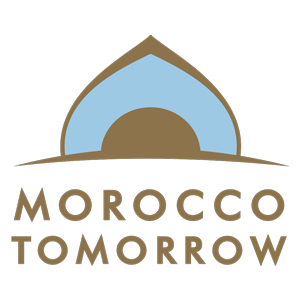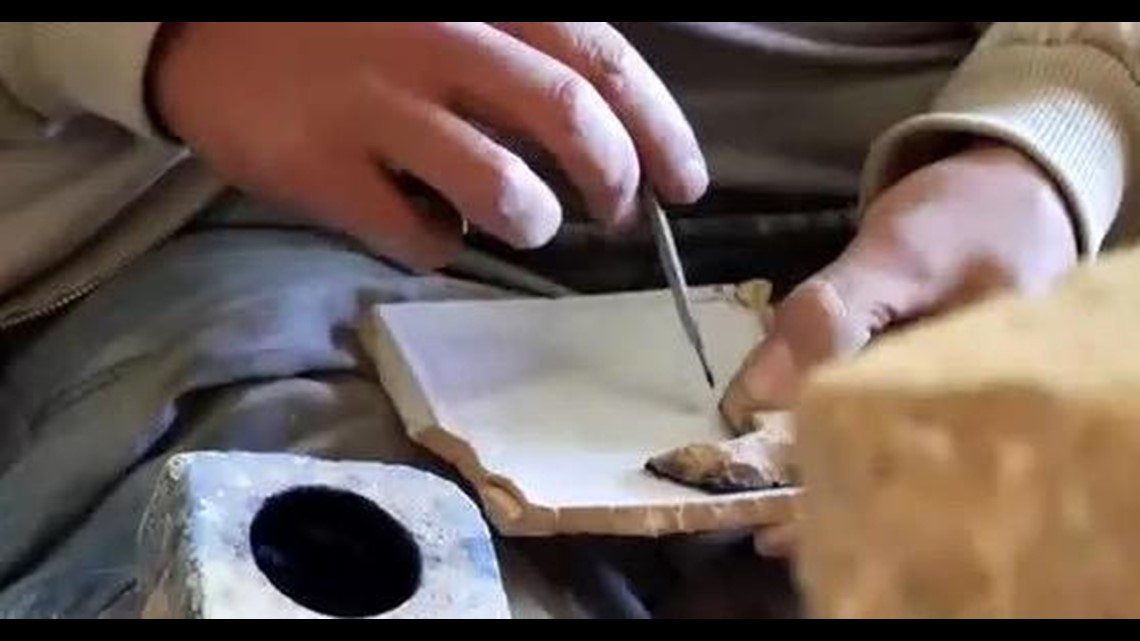Round Earth Media
Sophie Pollock
Crafting mosaic tile is an endangered tradition. Here are the folks keeping it alive.
Moroccan craftsman among the last to keep alive old tradition: Zellige
An old form of Islamic art in Morocco is endangered, but Driss Zourgane is trying to keep it alive.
Jeanette Lam, Courtesy Round Earth Media
FEZ, Morocco — Morocco prides itself on an artisan culture that creates striking jewelry, metal, leather and wood. But one traditional craft is in danger of fading — the centuries-old skill of making zellige — the mosaic tile that adorns mosques and palaces.
Making these tiles, a skill handed down from father to son, requires intense training and hard work with low pay. Few young people now are interested in learning how, as factories here and abroad can spit out similar tiles much faster and cheaper.
“The kids of today want easy work with headphones, and they talk all the time,” said Mohaihad Thaifa, 65, director of Mosaique et Poterie de Fes, one of the largest pottery and zellige factories in Fez, a city considered the heart of Morocco’s craft industry. “They’re not actually interested, which means the work of a kid of my generation is equal to the work of four or five today.”
Driss Zourgane may be part of the dying breed. He crouches in a dusty workshop, with his knees resting on cinderblocks and a strip of old denim stretched across his lap. He hammers chunks of colored clay with his weathered hands, methodically breaking off pieces he then chips into precise shapes and sizes.
Another worker will take those shapes, position and cement them into place to create a beautiful zellige, or mosaic.
Zourgane, 36, has been doing this since he was 7. He spent five years learning the craft — time he otherwise would have spent in school learning to read. Now, he produces about 400 such pieces during a workday of 10 hours or longer and takes home $10 — the only steady income for a family of six that includes his parents and siblings. The work is grueling.
Handmade tiles might cost $200 per square yard, but those made in a factory cost only about $7, said Itri El Bermossi, manager of the shop where Zourgane works.
More children now stay in school longer than when Zourgane dropped out to learn the trade from his uncle. Some start learning zellige around age 15, but their work often is not as good as those who start younger, Zourgane said.
Morocco’s artisan industries employ 2.5 million to 3 million people, in a country of more than 35 million, according to La Maison de L’Artisanat, a public organization created to promote Moroccan handicrafts. A 2016 report from the High Commission for Planning of Morocco shows a steady decrease in the number of jobs in the artisan sector since 2007.
Zourgane and his lifelong friend and coworker, Abdelwahd Hafid, 35, said their earnings are modest, but they are proud to make enough money to support their families.
Zourgane’s father used to support the family with odd jobs. Now Zourgane’s parents and siblings — including a disabled sister — live off of his earnings. “Even if Allah gives me just 10 dirham ($1) I will give it to them,” Zourgane said of his family.
Zourgane and Hafid, who has been making tiles since he was 10, are among the youngest in their workshop. Others in their late 50s still perform the physically demanding work. The question is whether they will be the last generation of zellige makers.
Handmade tiles still are popular with wealthy Moroccans. Foreign tourists covet the tiles and other Moroccan crafts. Tour groups are dropped off to see Thaifa’s factory and then given a chance to buy tiles and pottery.
Tourism brings much money into Morocco, so the government encourages a new generation to learn the traditional skills. Across Morocco are 58 artisan schools that teach the art of jewelry making, woodworking, metal work, leather and many other crafts. But in Fez, only seven students out of 400 are enrolled to learn zellige.
For every three or four current zellige workers, there is only one student, according to Thaifa. “The government has made a lot of effort and the cooperatives have made a lot of effort, but we only find a small minority who wants to learn,” he said.
The government in 2015 began a labeling initiative to promote the quality of handicrafts and to protect Moroccan tradition. For zellige tiles, the label guarantees that the clay does not contain lime or iron, elements that can damage the mosaics.
“We are doing it to show the national and international consumer the quality of zellige,” said Abderrahim Belkhayat, regional director of the Ministry of Handicrafts and Social Economy in Fez.
But work is irregular in small shops like the one that employs Zourgane and Hafid. Despite the government’s efforts to boost craft industries, most artisans lack official documentation of employment, meaning they receive no government health care. Hafid said the next generation wants a steady income and benefits.
El Bermossi, the shop owner, blames automation for the industry’s troubles. “That’s why the demand for our craft is decreasing,” he said. “People don’t value and appreciate our work.”
While artisans like Zourgane and Hafid understand the cultural importance of zellige, they worry that many people simply can’t tell the difference between modern and traditional tile work.
Belkhayat, the ministry official, said the tile itself is less important than what it represents. “When you buy zellige, you do not buy the product,” he said. “You buy history and culture.”
Sophie Pollock and video producer Jeanette Lam spent several months in Morocco on a School for International Training study abroad program and produced this story in association with Round Earth Media.
5:57 p.m. GMT June 7, 2018





